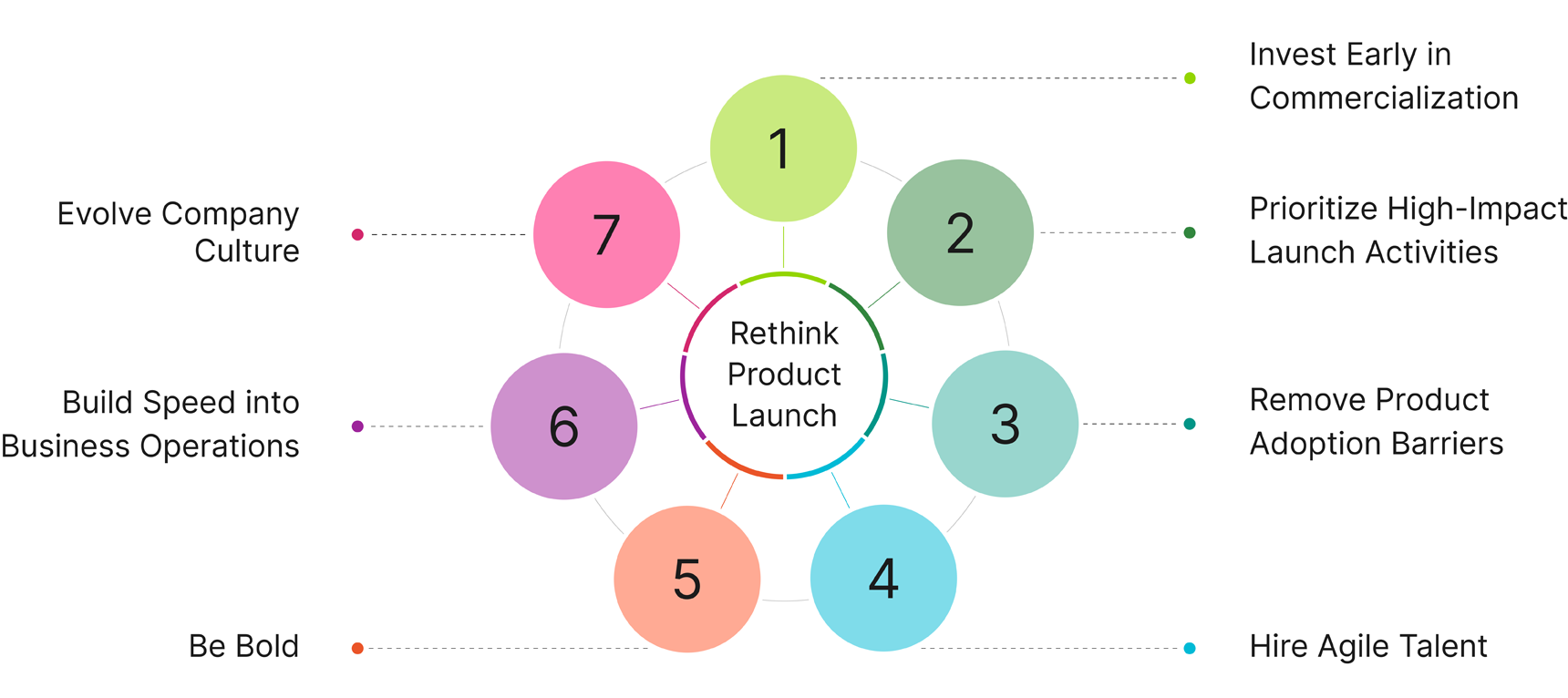 Search
Search


In today's fiercely competitive market, first-time launch companies face unique challenges when pitted against established giants. However, with the right strategies and mindset, not only can these companies survive, they can thrive.
The foundation for success lies in defining a north star vision. Your vision should guide your product launch, shape how the market perceives your organization, and influence every aspect of your commercialization strategy—differentiating you from competitors.
Building upon this foundation, here are the seven critical success factors that can guide single product companies toward success and wins in the market.

Early investment in commercialization is now a prerequisite for success. Delaying pre-launch activities can limit your commercial potential or even render you irrelevant before entering this increasingly complex, option-rich market.
Disrupting the market and displacing competitors requires a great strategy and highly orchestrated execution. Plus, it takes time to shape the market and demonstrate relative value when launching a product.
If a gene therapy company begins commercialization activities three years before the launch of its treatment for a rare genetic disorder, it can educate the market on the therapy's novel mechanism of action, establish relationships with patient advocacy groups, identify the right patients for the drug, and develop a robust value story. This early investment can lead to rapid uptake post-approval, despite the company being a new entrant in the market.
There are three types of launch execution activities, each with different impacts:
Winning launches are predicated on differentiated activities. For instance, when launching a first-in-class immunotherapy, focusing resources on innovative KOL initiatives, real-world evidence generation, and innovative patient support programs can differentiate you from competitors and drive strong initial adoption, even against established players in the oncology space.
Every launch faces unique barriers based on the disease, unmet need, competitive environment, and specific patient, caregiver, and health system challenges. Using a systematic approach to barrier identification and removal prior to launch is an accelerator to market readiness and post-launch growth.
For example, if complex administration is identified as a key barrier for a new biologic treatment, developing a user-friendly auto-injector device and comprehensive nurse training program can significantly improve patient experience and achieve higher adherence rates compared to competitors.
Agile functional leaders with product launch experience who can adapt to the evolving needs of your organization are crucial. During lean times, they need to be hands-on doers. Post-launch, as the business grows, they need to transition to strong functional leaders who can attract and retain high-performing teams.
A pre-commercial biotech developing a novel CNS therapy can benefit from recruiting a commercial leadership team with both Big Pharma launch experience and startup agility. This blend allows for building robust market access and sales processes while maintaining flexibility to quickly adapt to evolving market dynamics.
Innovation is your competitive edge. Thinking differently about core commercialization activities will pay dividends. Capitalize on opportunities beyond the product itself and take a forward-thinking approach by incorporating technology for customer centricity. Customers are open to new and better experiences, whether they are KOLs, prescribers, health systems, patients, caregivers, or payers.
For instance, developing an innovative digital patient finding program that combines genetic testing initiatives, social media outreach, and AI-driven data analysis for a rare disease enzyme replacement therapy launch can allow for faster identification and engagement of patients compared to traditional methods, leading to rapid market penetration.
Establish mechanisms that enable your organization to work efficiently, giving resources the agency to respond to customers. As your team grows and the pace of decision-making accelerates, having a clear delineation of decision authority will facilitate the transition from a development company to a development and commercial company.
Implementing a rapid market response system for a newly launched orphan drug can allow the commercial team to quickly address emerging access barriers and competitive threats. This agility can help outmaneuver larger, slower competitors in the rare disease space, leading to faster-than-projected market share gains.
Bringing a drug to market is a remarkable achievement. To get to the point of commercialization, organizations have typically established a culture of innovation, operational discipline, and clinical excellence. It is critical to retain these special characteristics as the organization grows and new, diverse functions are introduced. Preserving what got you to this point, while creating an intentional openness to new thinking and different capabilities, will allow you to attract and retain high performers and continue to beat the odds in the market.
Winning in the market as a first-time launch, single-product company is a big—though not insurmountable—challenge. The factors discussed here can position your company for success.
Remember, your product launch is not just another milestone; it is an opportunity to showcase your company's potential and strategic vision. Embrace the challenge, stay focused on your goals, and let your passion for innovation and excellence guide you to victory in the marketplace.
Guidehouse is a global AI-led professional services firm delivering advisory, technology, and managed services to the commercial and government sectors. With an integrated business technology approach, Guidehouse drives efficiency and resilience in the healthcare, financial services, energy, infrastructure, and national security markets.